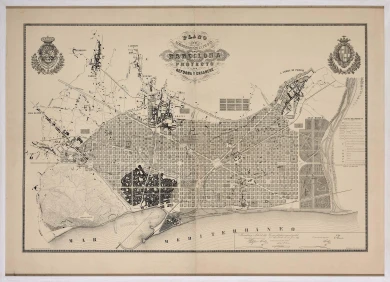
Une cité industrielle. Étude pour la construction des villes (An Industrial City. Study to Build Cities)
- Technique
- Photomechanical print on paper
- Dimensions
- Album: 32,5 x 42,5 cm
- Year of entry
- 2022
- Registration number
- AD10807
- Date
1932
- Description
A set of two folders containing 164 pictures on the city designed by the artist
From the constant search for the ideal city that materialised from the late nineteenth century, the figure of Tony Garnier emerged with a force stemming from his approach, one of the most relevant in relation to this theme. Born and raised in a working-class neighbourhood in Lyon, he trained at the Fine Arts Academy in Paris between 1889 and 1899. It was there that he won the Prix de Rome, enabling him to move to the Villa Medici in 1900.
Within the first shipment of materials sent from Rome to the French academy, Garnier included a series of plans of the imaginary city: the Industrial City, constituting the first chapter in a work he would eventually present in Paris in 1904 and broadly disseminated via the publication of the two dossiers with the entire project.
Cognisant of his origins and having participated in the socialist movement during his time in Paris, his proposal for the industrial city also revealed his social demands. Thus, as well as functionally dividing the city into differentiated areas, Garnier championed a city model without private property and where citizen welfare is guaranteed.
Francisco Rojas Serrano

